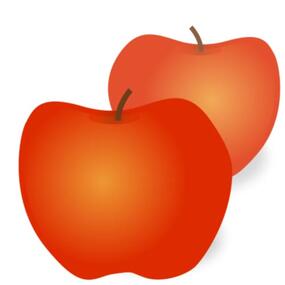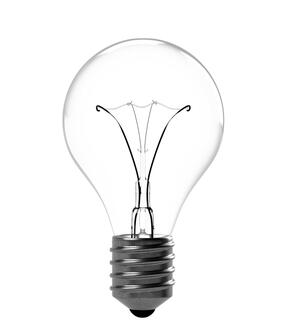What Do You Know About
Virtual Water?
Test your knowledge about virtual water, the water you didn't know you were using.
Everyone knows we use water for drinking and washing. But did you know that all the food we eat and products we buy take water to grow and manufacture? The water it takes to grow an apple or make a t-shirt is called virtual water. While you can't avoid using it, this quiz shows you where there is virtual water.
Which beverage takes the most water to produce, including water used to grow and process the plants?

a cup of coffee

a cup of tea

a glass of orange juice

ANSWER: a cup of coffee
A cup of coffee contains 280 liters (74 gallons) of virtual water. That's over 1,000 times the volume of the coffee cup! In comparison, a glass of orange juice contains 213 liters (56 gallons), and a cup of tea contains 30 liters (8 gallons).
Coffee consumes about 2% of all the water used to grow crops worldwide. Both orange trees and coffee trees need a lot more water than tea plants.
Which of these three grains takes the most water to grow?

wheat

corn

rice

ANSWER: rice
Producing 453 grams (1 pound) of rice takes 1,542 liters (407 gallons) of virtual water. That's enough to fill about ten bathtubs! In comparison, wheat takes 590 liters (156 gallons) and corn takes 408 liters (108 gallons).
Growing rice takes a lot of water since the fields need to be flooded during certain phases of plant growth. While corn and wheat use less water, they are still relatively thirsty plants.
Which snack takes the most water to grow and produce?

potato chips

two oranges

two apples

ANSWER: potato chips
A serving of potato chips contains 185 liters (49 gallons) of virtual water. In comparison, two oranges contain 100 liters (26 gallons) and two apples contain 140 liters (37 gallons).
For a change, there's not much difference comparing apples to oranges. Growing potatoes uses a little more, and a small amount is used to process them into chips.

How much water does it take to produce a fast food meal including a one-third pound hamburger, French fries, and orange juice?
290 liters (77 gallons)
2,900 liters (766 gallons)
29,000 liters (7,660 gallons)
ANSWER: 2,900 liters (766 gallons)
The hamburger alone takes 2,400 liters (634 gallons) of water, enough to fill 16 bathtubs! Beef, like eggs, milk, and other animal products, contains a lot of virtual water. Animals eat plants, which in turn need water to grow.
Which kind of meat contains the least virtual water?

pork

chicken

beef

ANSWER: chicken
Producing 453 grams (1 pound) of chicken takes 1,769 liters (467 gallons) of virtual water. In comparison, pork takes 2,177 liters (575 gallons) and grain-fed beef takes 7,031 liters (1,858 gallons).
Producing chicken meat requires less water per pound than grain-fed beef or pork. But in general meat contains much more virtual water than other foods.
Which of these products takes the most water, including water used in producing the raw materials and in manufacturing?

a microchip for a computer

a cotton t-shirt

100 sheets of paper

ANSWER: a cotton t-shirt
It takes 2,700 liters (713 gallons) of virtual water to make a medium-sized cotton t-shirt. In comparison, a microchip for a computer takes 32 liters (8 gallons) and 100 sheets of paper take 1,000 liters (264 gallons).
Cotton is a thirsty plant, plus there's a lot of water involved in bleaching and printing processes.
Which source of lighting uses the most water? (For this question, only consider the water used to generate the energy for the light .)

an incandescent light bulb

a compact fluorescent light bulb of equal brightness

sunlight

ANSWER: an incandescent light bulb
Traditional light bulbs use four times more energy than compact fluorescent bulbs. Most energy generation, including coal and nuclear power, uses steam turbines that consume plenty of water. So when you save energy, you're saving water too! Sunlight consumes no water at all.
Image Credits:
coffee, CC0 public domain; tea, CC0 public domain; orange juice, CC0 public domain; wheat, CC0 public domain; corn, Bill Ebbesen/CC BY-SA 3.0; rice, CC0 public domain; chips, oranges, apples, fast food, © Ico Romero/AMNH; pork, CC0 public domain; chicken, CC0 Creative Commons, beef, CC0 Creative Commons, microchip, CC0 public domain; t-shirt, Thor/CC BY 2.0; paper, CC0 Creative Commons; energy saving light, Sun Ladder~commonswiki/CC BY-SA 3.0; incandescent light, CC0 License; sunlight, CC0 Public Domain




 Biodiversity
Biodiversity
 Brain
Brain
 Genetics
Genetics
 Marine BiOLogy
Marine BiOLogy
 MicrobiOLogy
MicrobiOLogy
 PaleontOLogy
PaleontOLogy
 ZoOLogy
ZoOLogy
 AnthropOLogy
AnthropOLogy
 ArchaeOLogy
ArchaeOLogy
 Astronomy
Astronomy
 Climate Change
Climate Change
 Earth
Earth
 Physics
Physics
 Water
Water
